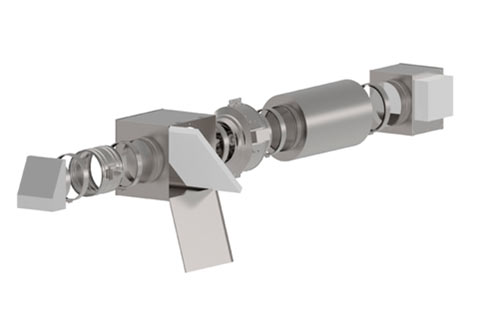Green Your Crib: Fixing Air-Flow Issues in Tight Houses

Powerful kitchen range hoods can vent 1,500 cubic feet or more of air per minute (cfm), quickly clearing the room of contaminants and cooking odors. For comparison, bath fans typically exhaust 100 cfm. But such powerful exhaust fans can also draw makeup air from unwanted sources, such as fireplaces, moldy crawl spaces, and gas heating appliances.
This depressurization with the accompanying pulling of air from undesirable places is increasingly prevalent as we construct homes to ever tighter standards. Even builders aware of the range hood depressurization problem and its associated potential health hazards have struggled for years to find a way to provide makeup air to replace the air being exhausted by the hood.
The above scenario is the backdrop for Fantech’s newly launched Makeup Air System (MUAS), a through-the-wall duct kit that balances outgoing air with an equal amount of introduced outdoor air. When the range hood is turned on, the Fantech unit opens a motorized damper, which then triggers the fan. The fan speed is automatically synchronized with the exhaust system’s fan, so the amount of makeup air matches the output of the range hood. The controller is the brains of the system. The outside air being brought in is filtered and can even be tempered with an optional heater kit when the introduced outside air is cold.
In part because of their newness, these Fantech fan systems are pricey, between $1,700 and $2,700 depending on the unit selected. They do solve, however, a long-standing challenge that has become more acute as we have crafted better insulated, more energy-efficient structures. Some people cannot have a fire in their fireplace and turn on their range hood without filling the house with smoke. Even more serious from a health perspective is the sucking of carbon monoxide from a home’s gas water heater or furnace into living spaces — a dangerous condition called backdrafting. Because of possible indoor health issues, there are people who would like to back off on the tightness of their homes, but this is not an option with today’s energy building codes.
Now, finally, with these sophisticated makeup air devices, we can enjoy our tight, energy-frugal homes while being assured of healthy indoor air. California has legislated that all new houses be net-zero energy structures by 2020. Balancing makeup air devices such as Fantech’s range hood fan are an important component of being able to construct tight homes without creating health risks for the inhabitants. Of course, these devices can also play a key role in retrofitting existing homes for greater energy efficiency.



